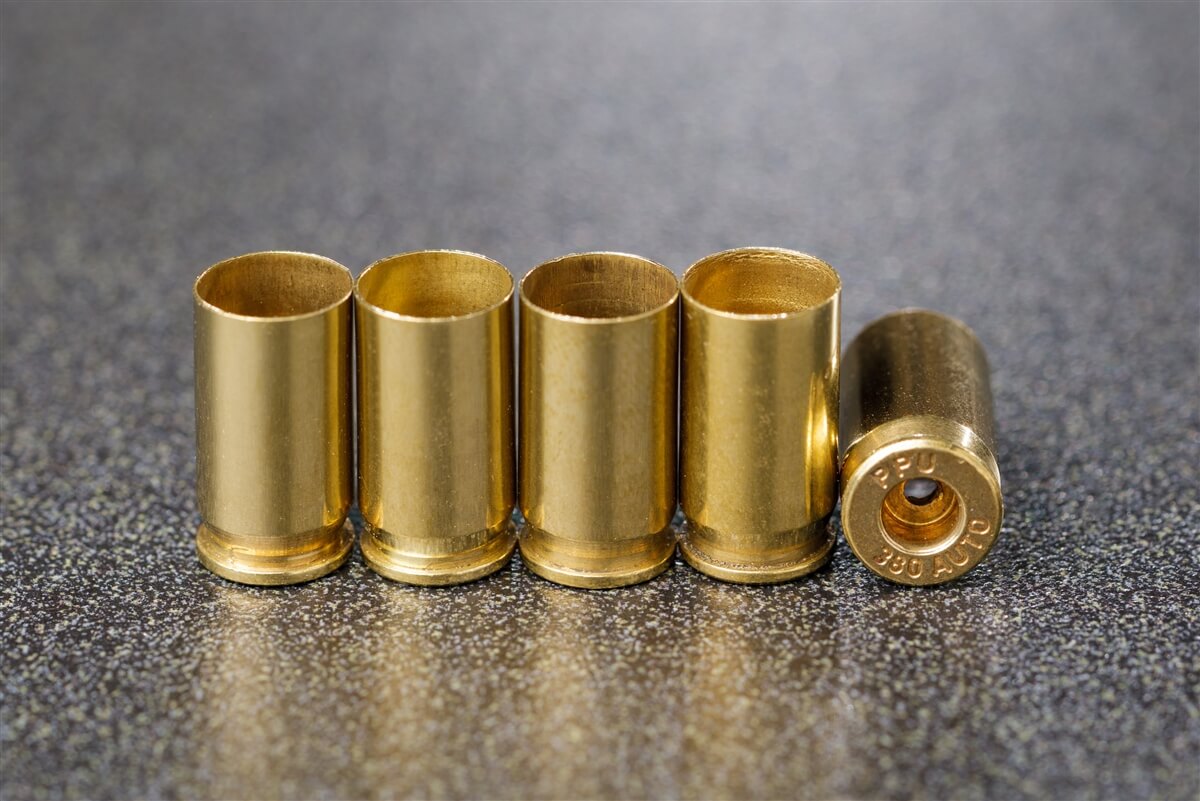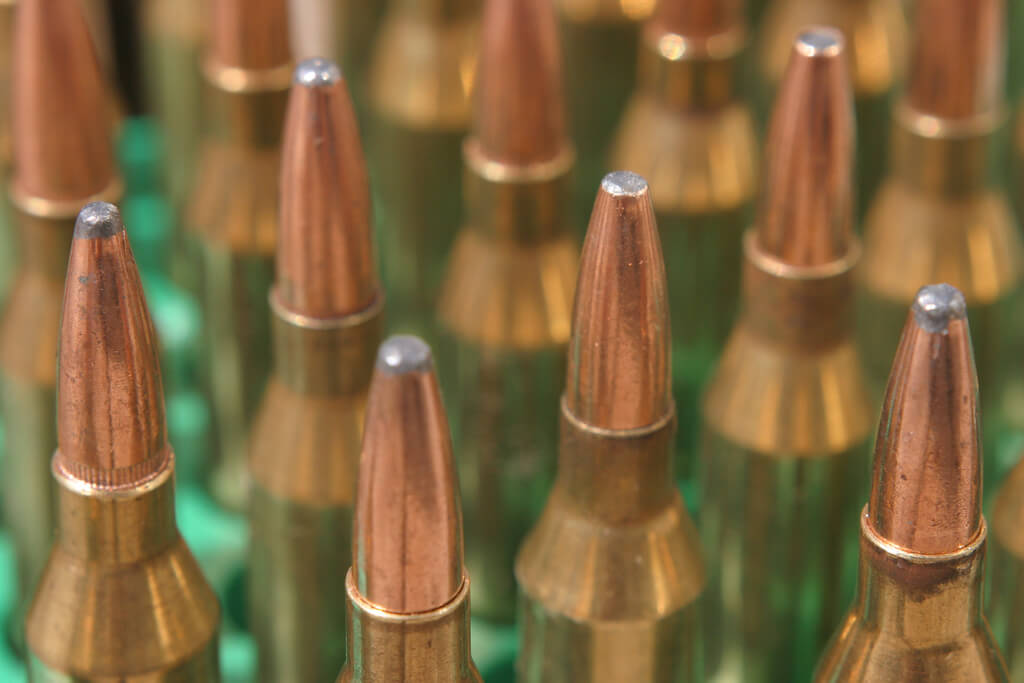With the COVID-19 pandemic and record-high firearm sales in the United States, ammunition is in short supply, impacting the rising cost of ammunition.
Despite manufacturers saying they are producing as much ammunition as possible, many gun store shelves remain empty and prices keep rising. As a result of the pandemic, social unrest, and a rise in violent crime, millions have purchased guns for protection or taken up shooting for recreational purposes. If we’re going to understand the ammo shortage, we should start by understanding how ammunition is distributed and sold.

Like this infographic? Feel free to embed or share.
Understanding ammunition distribution and retailing
A manufacturer typically delivers ammunition to a distributor, who then distributes it to dealers based on when their orders were placed and how much they ordered. In the event that a dealer didn’t plan their purchase, the order may be processed when they’re next in line, explaining why some stores have empty shelves while others have ammunition pallets delivered and stocked up.
The rising price of everything!
Having learned how your ammo reaches your retailer, let’s examine the first and most obvious factor that contributes to the rising cost of ammo. Inflation! A simple definition of inflation is the reduction of the purchasing power of a currency over time as a result of increased prices for essential goods and services. Inflation is usually caused by an increase in raw material prices or wages, or by a surge in demand for goods and services.
Many raw materials have been halted on a global scale due to the restrictions put in place during the pandemic. As the world begins to reopen, the extent of these shortages is now being exposed, which has pushed prices up as a result.
There’s no question about it, copper’s price has soared, therefore brass’s price has risen as well. Lead is more heavily regulated, and a real alternative is very hard to find from a cost perspective. Powder costs more because it must be manufactured with shipped products, and with fuel prices at an all-time high, the price increase makes sense. Because of the increase in inflation, the cost of making ammo increases, which leads manufacturers to increase their prices passing the cost onto you.
If you think inflation is on the rise Buy Now to benefit from future price rises.

Surge in demand
During the past year and a half, an influx of new gun owners and widespread ammunition stockpiling has led to bare shelves and high prices. In 2020, the number of background checks for firearm purchases surpassed a record 21 million, up from 15.7 million in 2016.
According to surveys, 40% of those 21 million people bought guns for the first time.
A lot of new gun owners want to practice at the range, take a marksmanship class, or otherwise improve their proficiency with their new firearm. Since that requires ammunition, most new gun owners leave the store with many boxes of bullets. As a result, other gun owners follow suit.
Gun owners who started stockpiling as soon as prices started to rise made prices rise even further. Now that new supplies are arriving, customers are grabbing them as soon as they are available. We are seeing that the people who buy firearms will want ammunition, and the people who already own firearms will also buy ammunition so it’s really following the toilet-paper effect we experienced during the pandemic.
Politics
Stockpiling is also heavily influenced by politics. According to a Gallup survey conducted in 2009, more than half of gun owners believed Obama would ban the sale of guns while in office, as do 41 percent of all Americans. In addition, shootings like the ones that occurred at Sandy Hook and Aurora, Colorado, have been shown to boost gun interest. The gun industry has acknowledged that politics drive gun buying and as a result, more volume of ammo is being purchased.
It’s also important to look at it from the perspective of the manufacturers since manufacturers are reluctant to invest in lots of expensive new facilities when they’re afraid the political mania could disappear at any moment. American ammunition manufacturers have been operating at or near capacity for the past decade and are reluctant to expand production operations to meet demand in case any new legislation affects their business.

The Secondary Market
Today, as we all know, a lot of businesses are operating online. Many online retailers allow customers to place backorders and will fulfill those orders when stock is replenished. Online retailers frequently receive stock of these products, but that stock is immediately shipped to customers with backorders. In reality, this becomes apparent because these products appear perpetually out of stock. In other cases, online retailers allow their clients to set notifications to take them by email or text message when a product returns to stock, so you may see ammunition listed as being in stock, but when you go to put your credit card information in for your purchase, it is no longer available.
In the end, it’s a supply and demand issue. Whenever the supply is low and the demand is high, opportunists pounce to make some spare cash, and those opportunities are plentiful today.
There are many brick-and-mortar retailers in desperate need of ammunition, so they have begun purchasing ammunition from customers at inflated prices. Let’s say that in the spring, a local customer paid .50 cents per round, but has been out of work due to COVID. He knows he can make a little side income if he sells a quantity of ammo back to the retailer for .75 cents per round, thus making a decent profit on his original purchase. After adding a margin, such as .25 cents per round, the store sells them for a dollar each. It’s purely economics, and that’s why Winchester White Box bulk packs of 115-grain FMJ ammunition cost $100 per 100 rounds, when they should cost about $25 per 100 rounds.
Upon realizing it’s easy money to sell ammunition back to a local retailer, consumers search the internet and big-box stores such as Walmart to find ammunition for sale at a reasonable price. At this point, the ammo scalper buys up all the ammunition available and resells it to a local retailer at scalpers’ prices. Or, he’ll resell it on the internet at a premium. These rounds, of course, are marked up and sold to eager customers.
Although there is no way to quantify how much ammunition is being scalped, industry experts say it happens frequently enough to affect the market at large.















2 Responses
This article is terrific. It’s factual, thoughtful and accurate, and written in clear, concise prose. That’s particularly important because the subject matter is very sensitive and political. Good job.
Thank you for sharing this article, it’s super insightful.